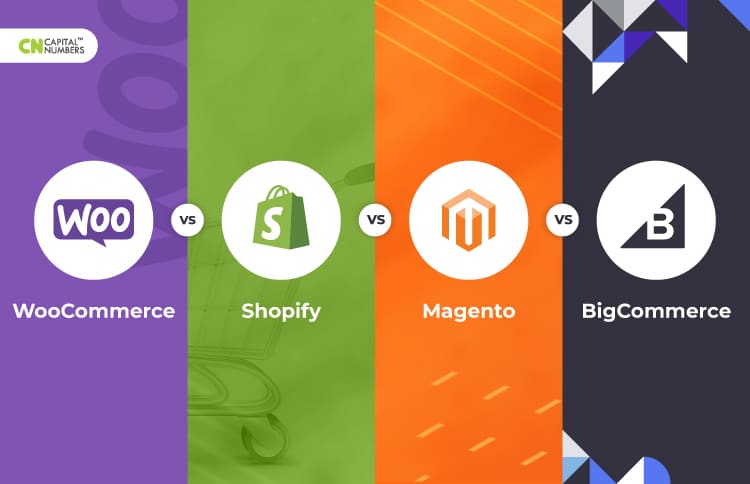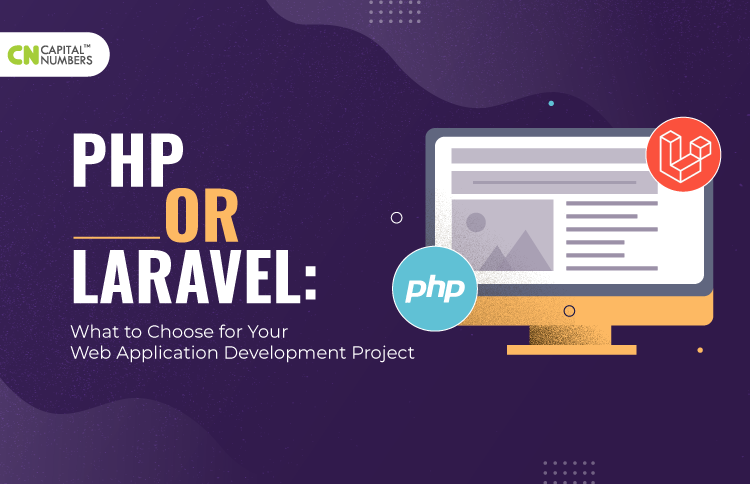WooCommerce vs. Shopify vs. Magento vs. BigCommerce
Table of Contents
E-commerce continues to set year-over-year records in 2020.
The ACI Worldwide Research recently announced that global eCommerce retail sales had reached 209% year-over-year revenue growth. Kount’s recent eCommerce Trends, Spring 2020 Report, further states that same day or next day shipping has gone up by 237% in mid- March this year, and peaked again in April, up 305% compared to the same week in the year 2019.
This growth of digital transformation trend is primarily because millions of consumers worldwide are showing new online buying habits this year. Home quarantines have made people reluctant to visit malls and stores for fear of getting infected. Many families have considered replacing their traditional store visits with online shopping until a vaccine for COVID 19 is available. There has been a 110% year-over-year increase in eCommerce orders in the US alone, according to COVID-19 Commerce Insight.
Without a doubt, online shopping is fast becoming the only semblance of regular commerce, and needless to say, a virtual lifeline for many. People are migrating to online purchases even for certain grocery items that experts tell us most of us never ordered online before.
Many families are not willing to go back to brick-and-mortar stores for the next six months to one year in the wake of the COVID 19 outbreak. They’re motivated to turn to digital options more than ever. This behavioral change is likely to impact long-term comportment.
Looking at this growing preference for online shops over physical stores, many companies have started launching their eCommerce apps and online marketplaces.
Besides, online shops are much easier to maintain than brick-and-mortar stores that involve storage rooms, insurances, and rents, among other things. This, too, led several companies to leverage robust eCommerce solutions to create their online shops.
Also, instant gratification is what’s attracting consumers to shop online. And companies are using the power of eCommerce technologies like WooCommerce, Shopify, Magento, and BigCommerce to capitalize on this opportunity.
Here’s a quick lowdown of each of these technologies and their key features that lead companies to use them to power their online marketplaces.
WooCommerce
WooCommerce is a WordPress plugin used to power around 41% of the total number of online shops globally.
Currently, WooCommerce has more than 3 million active installs.
Let’s talk about why WooCommerce is such a success.
- Cost-Effective: The most significant benefit of WooCommerce is that you can easily download it in the WordPress directory. Although you might have to pay for a few advanced features, most of the extensions are reasonably-priced.
- Easy to Set Up: After you download, install, and activate WooCommerce, a wizard will help you set it up. You can create and manage all your products with ease after you’re done with the set-up.
- Customizable: WooCommerce is developer-friendly. There are thousands of possibilities for customizations since it integrates with most themes.
- Feature-Rich: It comes with many features and multiple options for shipping, product variations, payment gateways, and coupons.
- Complete Ownership: With WooCommerce, you can have full ownership and control of your WordPress site. This helps you keep track of what’s happening on your website. Moreover, you can always take your data with you if you decide to change hosting providers.
Just like anything else, even WooCommerce is not without limitations. Following are a few of them:
- WordPress Dependent: WooCommerce is not an independent software, but a WordPress plugin, which requires you to be familiar with WordPress to use it to its full potential.
- Niche Skills Required for Customizations: Only those with in-depth design skills can make advanced customizations with WooCommerce.
- Ultimate Expense is Difficult to Foresee: Successfully running a WooCommerce site requires added expenses for hosting, security, and maintenance. Therefore, it’s challenging to keep a note of the exact costs needed to use WooCommerce.
Although handling WooCommerce sites might be a tad difficult for the less experienced ones, nothing is impossible with a little effort and training. WooCommerce is great for sellers who are willing to take complete control and ownership of their venture.
Shopify
With over 275,000 vendors on Shopify, it is one of the most popular eCommerce solutions because of the following points:
- Variety of Features: Shopify is a paid service and comes with a wide range of features. Based on your plan, you can enjoy features like printable invoices, analytics, shopping cart recovery, and gift cards.
- Mobile-Friendly: Shopify comes with multiple mobile responsive themes, which is a great advantage, especially when mobile commerce is on the rise. You can also integrate Facebook messenger in Shopify to make online purchases even more convenient.
- Easy to Customize: Almost everything in Shopify can be custom-built via the UI, including the design. This allows you to preview all the changes before making them live.
Although Shopify allows businesses to create an online shop instantly, many still reconsider using this eCommerce technology because:
- Shopify is Expensive: Although you get a free trial, Shopify’s cheapest plan requires you to spend $29 every month. You need to spend money on themes as well.
- Customization is Difficult: As far as customization is concerned, you need to go into Shopify’s codebase if you want to code your theme.
All in all, Shopify helps you get started quickly. If you are just a beginner looking to gear up your startup venture, Shopify is perfect for you.
Magento
Magento is an open-source platform that you can install on your server. It is perfect for large-scale projects, and it’s a lot more technical compared to WooCommerce, Shopify, and BigCommerce.
Let’s check out some of the critical advantages of using Magento:
- Free: Although Magento has an Enterprise Version, which comes with a hefty price tag of $17,000 per year, there is a Community Edition as well, which is available to everybody for free.
- Third-Party Integrations: Magento comes with its own exclusive set of extensions, consisting of integrated newsletter marketing, inventory management tools, payment systems like Magento 2 custom checkout fields, and product bundles.
- Scalable: Magento is excellent for handling projects of enormous scales. It can manage thousands of products at a given point in time.
Although Magento is a large-scale solution, one of its primary limitations is that:
- Magento is Not for Beginners: Only the specialists or those with deep technical expertise can use Magento. It is not for casual users.
To sum up, Magento is a high-end eCommerce solution that is perfectly suitable for companies, coders, and entrepreneurs with a big budget.
At our company, we understand the importance of having a strong and reliable Magento website for your business. That’s why we offer dedicated Magento developers who are skilled in creating and maintaining high-quality websites that meet your specific needs
BigCommerce
With BigCommerce, all you need to do is sign up and design your shop. BigCommerce will handle the rest of it in the background.
It powers over 95,000 live sites in around 150 countries. Here’s a quick look at why this eCommerce solution is a profitable one for businesses:
- Marketing and SEO: BigCommerce has its options to set meta descriptions and page titles. It integrates with Google shopping that lets you run marketing campaigns, sales, and promotions.
- Clean UI: BigCommerce comes with a clean UI. Developers highly prefer its interface because of its uniqueness and minimalism.
- Extensive Payment Options: BigCommerce has over 60 payment gateway options. You can accept and make payments directly through your BigCommerce store, instead of depending on third-party services.
Two main difficulties that businesses face while using BigCommerce are:
- Costly Plans: There is a pro plan where you need to pay $199.95 per month, but after you hit 3000 sales on the platform, you need to pay an extra amount for every additional 1000 sales you hit. This can lead to a costly affair.
- Lack of Control: You can never get full control over a BigCommerce site because you cannot host it on your server. Your data gets recorded and stored on someone else’s computer all the time.
In essence, BigCommerce is excellent for small and medium-sized businesses, and you can set it up in minutes. However, its costly pricing policy sometimes becomes a matter of concern for companies working on a small budget.
Summing Up
The above technologies can help businesses create some of the most stunning and impressive eStores and marketplaces. Therefore, most companies are tapping into the potential of these eCommerce platforms to digitally upgrade themselves, especially now, when eCommerce has seen some of its drastic peaks.
Today, there is an urgency to digitize the retail space to meet the ever-growing needs of a socially-distant society.
Companies are trying to regain their customers’ trust by leveraging eCommerce solutions like Magento and Shopify that guarantee returns in this volatile market.
If you, too, want to transform your business with cutting-edge eCommerce technologies, partner with us.
We have in-depth expertise in developing projects using Magento, Shopify, and WooCommerce plugins that scale.
Contact us to shift to digital.
This is a great time to accelerate your eCommerce adoption to cater to today’s homebound customers.


 Web Development
Web Development Cloud Engineering
Cloud Engineering Mobile App Development
Mobile App Development AI/ML/GenAI
AI/ML/GenAI E-commerce
E-commerce Software Development
Software Development UI/UX
UI/UX QA
QA Dedicated Teams
Dedicated Teams











